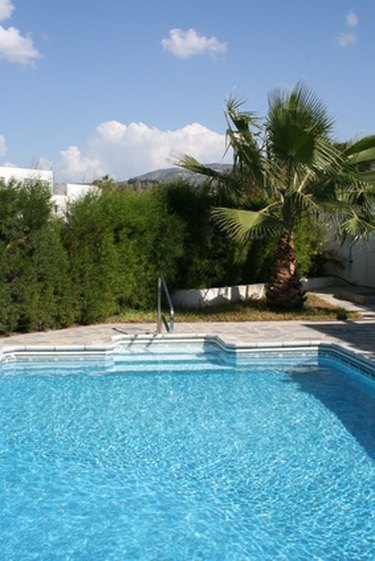Things You'll Need
Pool rake
Mild vinyl tile cleaner
Non-abrasive cloth
Soft pool brush

Fiberglass swimming pools are growing in popularity because they are pre-fabricated, simple to maintain, durable, and less expensive over time. Unlike concrete, fiberglass pools never need to be relined or resurfaced. Fewer chemicals are needed in fiberglass pools, since fiberglass doesn't affect the pH levels in the water much. As with all pools, body oils, suntan lotions, and airborne contaminants can collect on fiberglass pool walls and tiles. Fiberglass pools should not be drained for cleaning purposes. Certain pool-cleaning supplies can be used to remove the residue.
Step 1
Sweep algae toward the main drain of the pool, using a pool rake. Unlike concrete pools, algae do not get trapped in the pores of fiberglass pools, so algae removal is simple.
Video of the Day
Step 2
Spray mild vinyl tile cleaner on the dirty, stained areas of the pool. Abrasive cleaners should not be used on fiberglass pool surfaces.
Step 3
Wipe away the cleaner and the scum with a non-abrasive cloth. If the residue is difficult to remove, gently scrub the scum with a soft pool brush.
Step 4
Clean remaining residue until the pool is completely clean.
Warning
Do not use steel wool, metal scrapers, brushes or tools on the fiberglass pool. The pool's gel coat finish may become permanently damaged.
Avoid using metallic vacuum cleaners or similar equipment on the fiberglass pool, to prevent harming the pool's surface.
Video of the Day